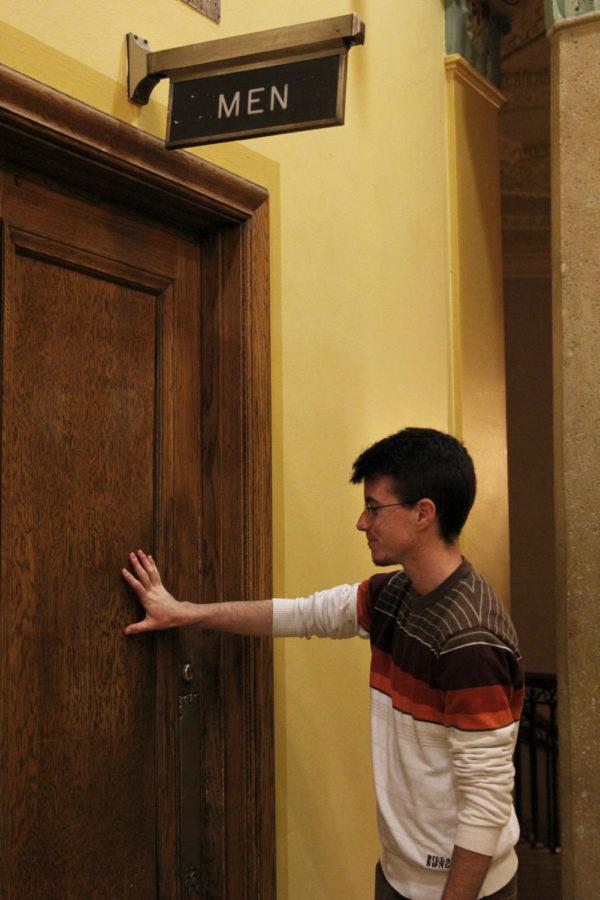Transgender students struggle with restroom choice
Jonathan Krueger/Iowa State Daily
One struggle for transgender people is the choice of which bathroom to use. Uri Donnett is a transitioned male who feels comfortable with using the mens restrooms but is still cautious of its inhabitants.
November 22, 2013
The sign on the bathroom door is something that most people take for granted, but transgender people have to evaluate which one to use and how other people will react, said Uri Donnett, fourth year student in veterinary medicine.
According to ISU policy, students can use the restrooms that align with their gender identity, said Brad Freihoefer, program coordinator for Lesbian, Gay, Bisexual and Transgender Student Services.
When Donnett started using men’s restrooms, he would wait until restrooms were empty or use ones that he knew had low traffic.
“I stopped using public women’s restrooms, unless it was an emergency, in high school,” Donnett said.
He said that he was often stared at or verbally harassed because women thought he was a boy in the women’s restroom, which made him very uncomfortable.
“I think there needs to be more gender neutral bathrooms. It’s not very accessible,” said Derrick Moeller, graduate student in education.
Tom Oftedal from facilities planning and management said his office is trying to be accommodating to all, and the issue has been discussed.
Freihoefer said he is seeing the trend of gender-neutral restrooms being added during renovations, and more are being seen in new buildings. Iowa State has added gender-neutral bathrooms in the Memorial Union, but they are out of the way, Freihoefer and Moeller both said.
“It took me a while to get used to the bathroom culture … before I transitioned, it was more social,” Moeller said.
Donnett said there is more standing around in the women’s restroom, which leads to people judging one another more.
“When I walked into a women’s restroom, women noticed … men typically don’t,” Donnett said.
In the men’s restroom, you get in, do your business and get out, Moeller said.
Moeller and Donnett always use the stalls.
Safety is a concern for transgender people in restrooms, Donnett said. It is a private place where you might not have someone help you in a conflict.
Transgender people are assaulted at a high rate; 238 people worldwide were murdered for being transgender, according to the Trans Murder Monitoring Project.
When Moeller started transitioning, he mostly used the restrooms at home. He said he started using the men’s restroom when he felt more confident that he was being perceived as his preferred gender.
“I think there comes a time where you don’t feel safe in either restroom,” Moeller said.
Moeller continued to use the women’s restroom for a month or two when he first began transitioning. He then felt uncomfortable but could not yet pass as male.
Before becoming a graduate student at Iowa State, Moeller worked at a social service agency whose restroom was not marked by gender, which made things easier for him.
“Since physically transitioning, I am much more comfortable using men’s restrooms in public,” Donnett said. “Although, I am still very cautious about what bathrooms I use and who else is in them.”
Donnett said he has gotten used to “scoping out” what the restroom availability is in new places. If there is no door on the stall, he won’t use the restroom there.
“It’s not something that people should have to get used to,” Donnett said.
Donnett said restrooms could be more comfortable if one could know that he or she was alone when walking into the room.







